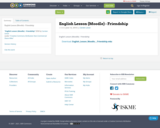
English Lesson (Moodle) - Friendship

English Lesson (Moodle) - Friendship
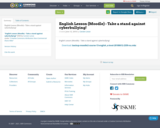
English Lesson (Moodle) - Take a stand against cyberbullying!
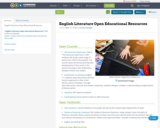
English Literature Open Educational Resources

A short PowerPoint on English/Spanish cognates.
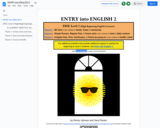
Higher Beginning concepts for lower-level English learners.
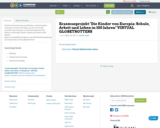
Students from Germany and Sweden worked together in groups to write travel blogs, one for each of the countries that take part in our Erasmusprojekt "Die Kinder von Europia: Schule, Arbeit und Leben in 100 Jahren".
https://eurokids100.wordpress.com/2016/05/20/ergebnisse-des-lernmoduls-virtual-globetrotters/
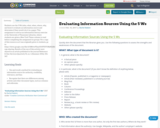
Students use the 5 Ws (who, what, when, where, why, and how) to evaluate an information source and determine if they would cite it in a paper. This assignment is used as an information literacy exercise at the University of Tennessee Libraries, where students are given a New York Times column to read before completing the assignment in groups.
For a copy of this resource as it was originally given to students, go to: https://drive.google.com/file/d/0B0vtrPDaeiV6VFJUYUNzRGlfb00/view?usp=sharing. Results of the use of this activity were shared in an article published in the journal Reference & User Services Quarterly 53, no. 4 (Summer 2014): 334-347.
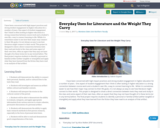
I have been concerned with high impact practices and strong student engagement in higher education for a number of years. One aspect of student engagement that I think is often lacking in higher education is a strong connection between course work and a student’s own life, a way to connect learning to life. While it is sometimes easier to see how their major may connect to their life goals, it is not always as easy to see how literature might connect to their world. This project is designed to show a direct connection between texts they read and study in the class and some aspect of their own lives, often an aspect that they may not have thought of in these terms [or in any terms] before. The final project requires students to identify a personal or familial artifact [either tangible or intangible] and apply what they have learned from the fiction they have read to an analysis of that artifact.
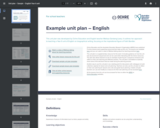
It includes guidance on how the unit was structured and sequenced and can be used while interacting with the Ochre resources. The plan also allows teachers to see an example of planning for a sequence of lessons and
reflect on their own teaching and effective practice. The unit plan is annotated to explicitly show some of the decisions that are made during the planning process.

This book has been developed by Erik Wilbur at Mohave Community College to support Creative Writing courses at rural Arizona community colleges. A PDF version and a Microsoft Doc. version of the book are available for download.
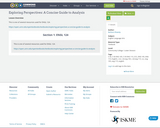
This is one of several resources used for ENGL 124. https://open.umn.edu/opentextbooks/textbooks/exploring-perspectives-a-concise-guide-to-analysis
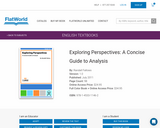
The reason why Randall Fallows wrote Exploring Perspectives: A Concise Guide to Analysis is simple; to help give students a better understanding of how to discover, develop, and revise an analytical essay. Here is how his 5 chapter book goes about doing just that:The first two chapters focus on the nature of an analysis and what’s involved in writing an analytical essay. First, Randall shows that analysis consists of a balance of assertions (statements which present their viewpoints or launch an exploration of their concerns), examples (specific passages/scenes/events which inspire these views), explanations (statements that reveal how the examples support the assertions), and significance (statements which reveal the importance of their study to personal and/or cultural issues).After showing why each feature should be present throughout an essay, he reveals how to ”set the stage“ for producing one of their own. He first helps students to evaluate their own views on a subject and to examine how these views emerge from their own experiences, values and judgments. He, then, shows them how to research what others have said about the subject and provides suggestions for evaluating and incorporating this research into their own perspectives.Finally, Randall discusses the nature of writing, not as a linear procedure, but as a recursive process where the discovery and clarification of a concept occur simultaneously.The remaining three chapters reveal more specific advice on how to develop an analytical essay.Exploring Perspectives: A Concise Guide to Analysis by Randall Fallows is a great text to prepare any student to write analytical essays for the argument and persuasion courses.
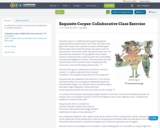
A collaborative hands-on exercise that has application to multiple disciplines.

In this resource, students will learn or review the topics WILL and GOING TO, the basic topics for the future tense.
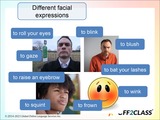
This is a speaking lesson plan that is great to use to introduce facial expressions. Facial expressions are important to study as they provide non-verbal cues and information. They can provide nearly as much information as spoken words do. They can be difficult to understand but when understood students can remain confident when interacting with others in English. This is a great lesson to introduce to upper-intermediate students that have been looking to develop a deeper understanding of English vocabulary in conversational contexts.If you want additional lesson plans and support, including teachers’ notes, be sure to register for a free Off2Class account.
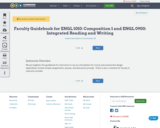
We put together this guidebook for instructors to use as a foundation for course and assessment design. Appendixes include sample assignments, quizzes, and discussion prompt. There is also a checklist for faculty to read and consider.

In this activity, students will practice talking about Deaf culture. They will discuss how Deaf individuals order food. Students will also discuss foods that they perceive to be healthy or not healthy.

These lesson plans and materials are designed for high school students, especially 9th and 10th graders. The goals of these lessons are for students to review and learn more about figurative language devices, to compare and contrast poetry from different authors, and understand point of view in order to see that authors have different perspectives in their works. This lesson plan unit covers six different poems from local Emma Bell Miles and famous Henry Thoreau. Each poem has a video, presentation, and handout to accompany it. The lesson plan has been divided into two 50 minute class periods. The first class period is designed to introduce the students to the poems and authors using the various materials. The second class period is designed to cover point of view according to Miles and Thoreau and ask the students to compare and contrast the authors’ perspectives and experiences.

Students will have multiple opportunities to practice fingerspelling their receptive, fingerspelling comprehension skills. Within this lab students will have exposure to different speeds of fingerspelling and a variety of letter pairs.

Summary is arguably the most important research-essay-writing skill. There are many methods for summarizing a text. This chapter of For the Love of Research: A Step-by-step Guide to Writing Research Papers provides one. If you are interested in checking out this workbook in its entirety. Please contact Debbie (me) at gilbertd@mjc.edu.